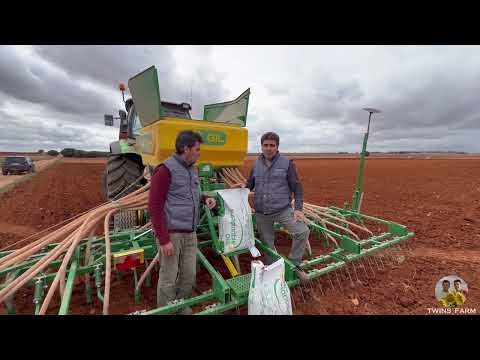With the beginning of November, we start the sowing season with renewed hopes after a disastrous last season due to the drought we are suffering. In this way, we recharged our strength and hitched the seed drill to the tractor to start the cultivation of Camelina… this is a new crop for us, although some farmers have been sowing it in our village for years. Camelina cultivation will help us to meet the CAP requirements and we will be able to comply with the required rotations… and it also leaves a good fallow for the following year’s cereal. Once we decided that we were going to sow Camelina, we contacted the Camelina Company that provided us with the seed. This company has been working with this crop in Spain for more than 10 years. They will give us technical advice during the crop life cycle and they also will buy the harvested crop. As for the sowing work that we show you in the video and our photos, we can highlight the size of the seed, which is the first thing that catches our attention. It is a micro seed, so we need to completely change the configuration of the seeder to throw 8 kg/ha and leave it as shallow as possible, although it shall be covered. In this respect, the Gil seed drill works exceptionally well and does an outstanding job. With respect to camelina, and in order to give you a better understanding of this crop, we can highlight the following characteristics: Drought resistant crop. Early sowing to reach about 6 leaves before winter frosts. Crop that can be sown with the direct seeding (no-till) technique. Average yield is around 1,200 kg/ha. Background fertilisation is recommended and cover fertilisation is essential. Rabbits do not attack this crop significantly. As far as the CAP is concerned, it complies with the P3 and P5 Eco-regimes. Camelina Company is the company that supplies the seed and buys the production once it has been harvested. We will monitor the crop and we will keep you posted on the blog and our social networks… the results are sure to be very interesting.
Versión en español.
